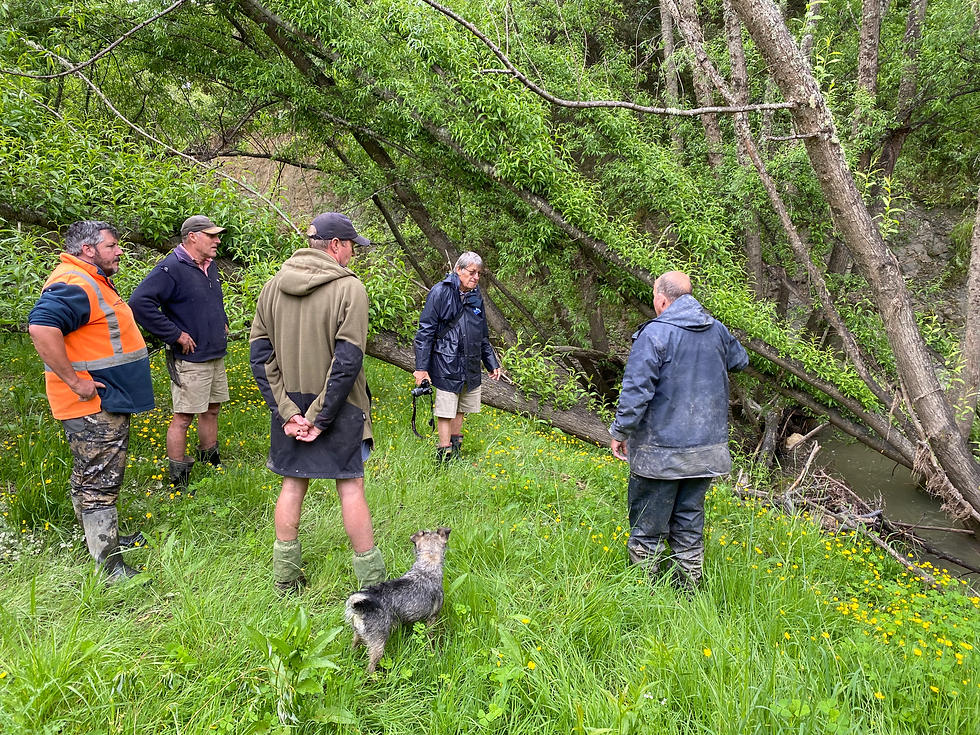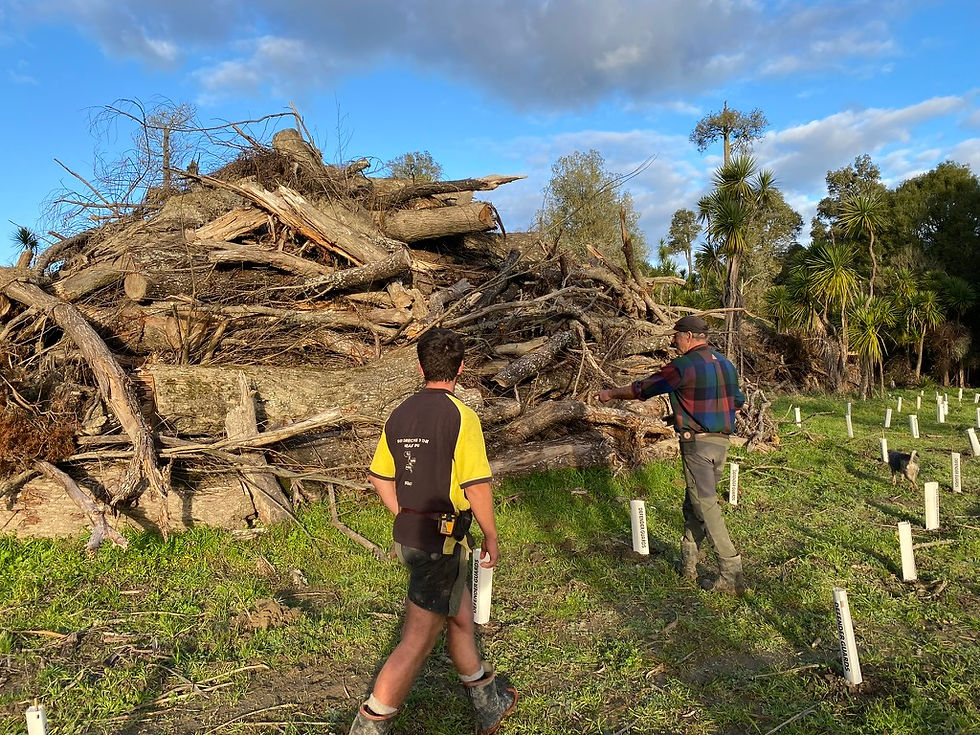Mangarara’s Mission: A Willow-Free Stream in Ten Years
- Holly Ormond
- Aug 28
- 2 min read

The Mangarara Stream, a winding tributary east of Patangata Bridge, is the focus of a determined community effort to tackle one of New Zealand’s most persistent pest plants - crack willow.
Left unchecked, crack willow clogs waterways leading to accelerated bank erosion and increased flood risk. In the Mangarara catchment, mature willows dominate the stream banks, their sprawling roots and collapsing trunks undermining stability and blocking channels.
“Willows have taken over in places,” says Greg Hart, local farmer and chair of the Mangarara Catchment Group. “They’ve been here for decades, but the damage they cause to water flow, bank stability, and farm infrastructure is now too big to ignore. We’re committed to removing them, and we’ve set ourselves a clear goal to become a willow-free catchment within ten years.”
The Mangarara catchment is the smallest of the seventeen Tukituki sub-catchments covering just under 4,000ha. Despite its size, it faces significant soil erosion and sedimentation. Cyclone Gabrielle exacerbated these issues, raising the stream bed by up to 60cm in some areas.
In 2023, the Mangarara Catchment Group, with the support of local catchment collective Tukituki Land Care (TLC), secured Access2Experts (A2E) assistance. A2E was a Ministry for the Environment service that provided free technical advice to help communities meet Essential Freshwater reform goals.
With A2E’s backing, Matt Highway of Element Environmental Ltd assessed erosion control, silt retention, and willow management options. This report became a blueprint for action and helped unlock $50,000 in Cyclone Gabrielle Recovery funding, which, combined with a $10,000 TLC Demonstration Grant, allowed work to start in priority areas.
The group’s two-phase erosion and sediment control strategy starts with removing crack willows, followed by replanting with poplars and natives for long-term bank stability. Landowners are being encouraged to take advantage of newly cleared areas by planting a diverse range of native species, building ecological resilience alongside erosion control. Ongoing management will be crucial to prevent reinfestation and ensure young plants survive in the face of floods, weeds, and browsing animals.
In March, work began at the confluence of the Mangarara Stream and the Tukituki River, with diggers, chainsaws, and burn piles marking the start of the campaign. In more challenging spots, teams are using drill-and-fill to target stubborn trees without disturbing surrounding vegetation.
Neighbouring catchment Mangamahaki has also started willow clearing with support from Hawke’s Bay Regional Council and is running a planting trial funded by TLC to showcase suitable species for flood-prone areas.
“In-stream willow is a problem right across the Tukituki catchment, not just here in Mangarara. The work we’re doing now is a chance to show what’s possible and to inspire other areas to take on the challenge.” says TLC catchment coordinator Pixie Seligman.
It’s a long-term commitment, but for those involved, the vision is clear: a healthy, willow-free Mangarara Stream supporting stable banks, improved water flow, and reduced sediment - all within the next decade.
More about the Mangarara Catchment Group can be found at www.tukitukilandcare.org/mangarara.











Comments